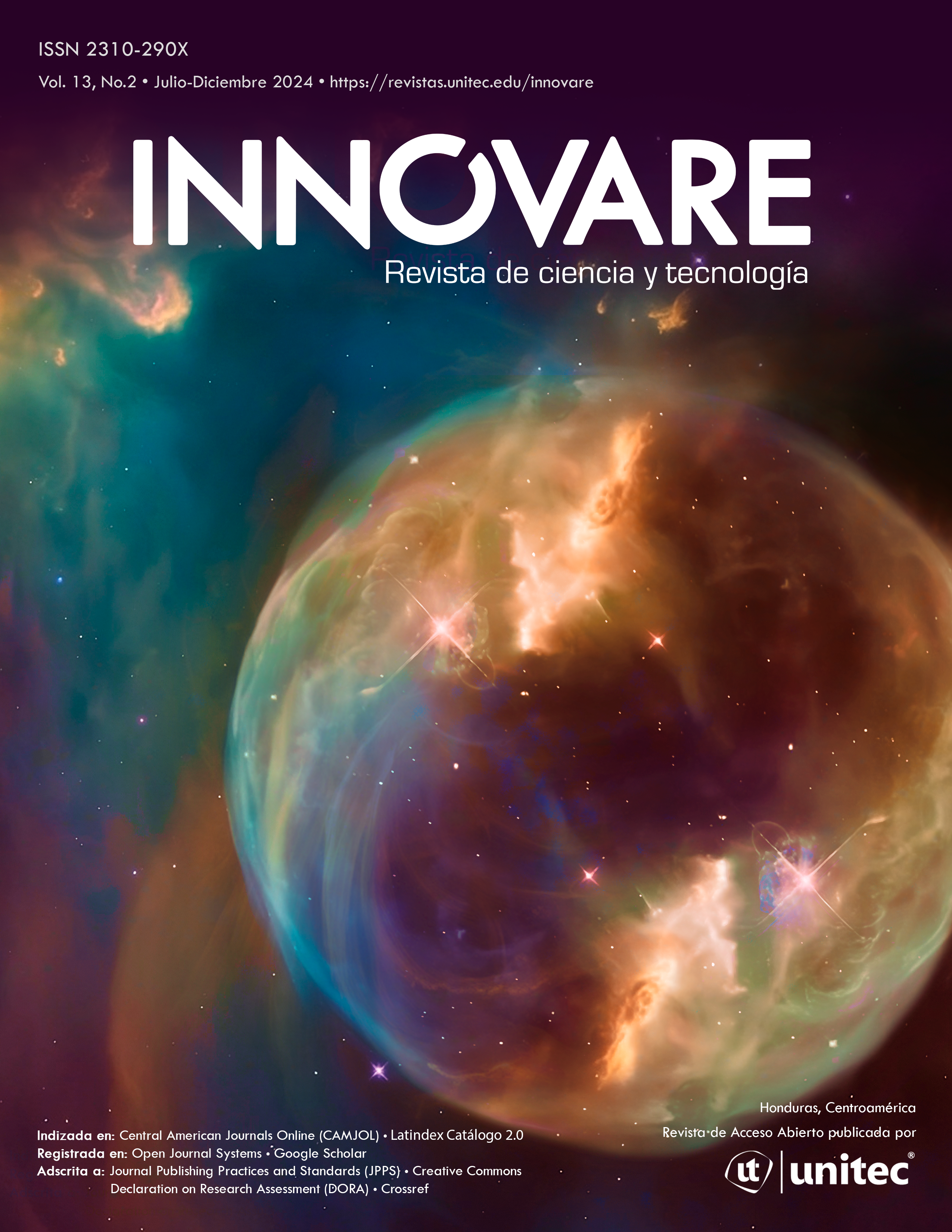Abstract
Abstract / Introduction. Governance in the Healthcare system has gained relevance in the digital era, particularly regarding the impact of information technologies on organizational efficiency. This study aims to analyze how institutional governance influences the digital transformation of the Honduran Social Security Institute (IHSS). Methods. A mixed, descriptive approach was applied, integrating document review, agent-based modeling (ABM) using NetLogo, and financial analysis covering the period 2020–2023. Two governance structures were simulated: an Intervention Commission (CI) and a Board of Directors (JD), using Preferential Attachment models to analyze organizational networks and the Ants model to visualize budget consumption. Results. The CI enables more agile decision-making and less hierarchical structures, whereas the JD exhibits greater dispersion and slower processes. The Ants model revealed that only 1.30% of the budget is allocated to technological innovation, making it the institution's lowest priority. Financial analysis confirmed that digitalization, in the absence of efficient governance, has not led to significant administrative improvements. Conclusion. That digital transformation requires governance capable of reducing bottlenecks and strategically prioritizing innovation.
References
Aguilar Villanueva, L. (2008). Gobernanza y gestión pública. México: Fondo de Cultura Económica. https://consultorestema.com/wp-content/uploads/2020/02/Aguilar_villanueva_gobernanza_y_gestionTC.pdf
Albert, R., & Barabasi, A. (2002). Statistical mechanics of complex networks. REVIEWS OF MODERN PHYSICS, 74(1), 47-95. https://doi.org/10.48550/arXiv.cond-mat/0106096
Alizadeh, T., & Sipe, N. (2016). Telecommunications and transportation infrastructure: inter- and intra-sectoral borders — perspectives from Australia and the US. International Planning Studies, Taylor & Francis Journals, 21(1), 50-63. https://doi.org/10.1080/13563475.2015.1114449
AlNuaimi, B. K., Kumar Singh, S., Ren, S., Budhwar, P., & Vorobyev, D. (2022). Mastering digital transformation: The nexus between leadership, agility, and digital strategy. Journal of Business Research, ELSEVIER: http://dx.doi.org/10.1016/j.jbusres.2022.03.038
Andino-González, P., Acosta-Tzin, J., Raudales-García, E., Aguilar-Hernández, & P. (2024). Análisis de redes y modelado de micronegocios basado en agentes. Ad-dnosiS, 13(13), e-606. https://doi.org/10.21803/adgnosis.13.13.606
Avalle, G. (2023). Gobernabilidad y gobernanza. Enfoques en tensión. Estudios Políticos. Universidad de Antioquia, 66, 28-47. https://doi.org/10.17533/udea.espo.n66a02
Banco Mundial. (2022). Grupo Banco Mundial. Inclusión Financiera: https://www.bancomundial.org/es/topic/financialinclusion/overview
Barns, S., Cosgrave, E., Acuto, M., & Mcneill, D. (2016). Digital Infrastructures and Urban Governance. Urban Policy and Research, 35(1), 20-31. https://doi.org/10.1080/08111146.2016.1235032
Bianca, C., & Pennisi, M. (2012). Immune system modeling by top-down and bottom-up approaches. International Mathematical Forum, 7(1-4), 109–128. https://www.researchgate.net/publication/265985623_Immune_system_modeling_by_top-down_and_bottom-up_approaches
Camou, A. (2001). Los desafíos de la gobernabilidad. México, D.F.: FLACSO México ; IISUNAM. https://biblio.flacsoandes.edu.ec/libros/12887-opac
Cárdenas, H., Rubiano, S., & Cabra, L. (2023). Liderazgo, gobernanza y transformación digital en el diseño organizacional de la educación superior colombiana. Revista Miradas, 18(2), 164–189. https://doi.org/10.22517/25393812.25468
Cepa, K., & Schildt, H. (2019). Technological Embeddedness of Inter-organizational Collaboration Processes. En J. a. Sydow (Ed.), Managing Inter-organizational Collaborations: Process Views (Research in the Sociology of Organizations, Vol. 64. 64, págs. 91-115. Emerald Publishing Limited, Leeds. https://doi.org/10.1108/S0733-558X20190000064007
CEPAL. (2021). Gobernanza digital e interoperabilidad gubernamental: una guía para su implementación. CEPAL. https://www.cepal.org/es/publicaciones/47018-gobernanza-digital-interoperabilidad-gubernamental-guia-su-implementacion
Correani, A., Massis, A. D., Frattini, F., Messeni-Petruzzelli, A., & Natalicchio, A. (2020). Implementing a Digital Strategy: Learning from the Experience of Three Digital Transformation Projects. Berkely Haas, University of California: http://dx.doi.org/10.1177/0008125620934864
IAIP. (2024). Instituto de Acceso a la Información Pública. Instituto Hondureño de Seguridad Social: https://portalunico.iaip.gob.hn/portal=356
IDB. (2014). Health Benefit Plans in Latin America. Inter-American Development Bank. https://publications.iadb.org/publications/english/document/Health-Benefit-Plans-in-Latin-America-A-Regional-Comparison.pdf
IHSS. (2024). Instituto Hondureño de Seguridad Social. Memorias Institucionales: https://www.ihss.hn/memoria-institucional/
Jimbo-Santana, M., & Jimbo-Santana, P. (2021). Desarrollo de las Tecnopolíticas en los Países de América Latina: Una Revisión Sistemática de la Literatura. Revista Economía y Negocios, 12(1), 51-65. https://dialnet.unirioja.es/servlet/articulo?codigo=8489737
Karimikia, h., Bradshaw, R., Singh, H., Ojo, A., Donnellan, B., & Guerin, M. (2022). An emergent taxonomy of boundary spanning in the smart city context – The case of smart Dublin. Technological Forecasting and Social Change, 185, 122100. https://doi.org/10.1016/j.techfore.2022.122100
Kitano, H. (2002a). Biología de sistemas computacionales. Nature, 420(6912), 206–210. https://doi.org/10.1038/nature01254
Kitano, H. (2002b). Biología de sistemas: una breve descripción general. Science, 295(5560), 1662–1664. https://doi.org/10.1126/science.1069492
Ko, A., Fehér, P., Kovacs, T., Mitev, A., & Szabó, Z. (2021). Influencing factors of digital transformation: management or IT is the driving force? International Journal of Innovation Science, 14(1), 1-20. https://doi.org/10.1108/ijis-01-2021-0007
Morales, C. (2020). Razones Financieras. Universidad Salazar Virtual: https://salazarvirtual.sistemaeducativosalazar.mx/assets/5ee0dd79712b3/tareas/7141b468472f48b2fa3aea7e1165089drazones%20financieras.pdf
Ortegón, A., & Quiñones, J. (2019). Complejidad, inteligencia artificial y evolución en la gestión pública. Universidad Continental. https://fondoeditorial.continental.edu.pe/complejidad-inteligencia-artificial-y-evolucion-en-la-gestion-publica/
Pérez Palma, W. J. (2024). La gobernanza en la transformación digital. Revista Académica CUNZAC, 7(1), 37–52. https://doi.org/10.46780/cunzac.v7i1.115
Peters, B. G. (2000). Governance in the Twenty-First Century: Revitalizing the Public Service. En Globalization, Institutions and Governance (pág. 464). McGill–Queen’s University Press. https://dokumen.pub/governance-in-the-twenty-first-century-revitalizing-the-public-service-9780773568884.html
Porfirio, J. A., Carrilho, T., Felicio, J. A., & Jardin, J. (2021). Características del liderazgo y la transformación digital. Journal of Business Research o ScienDirect, ELSEVIER: https://doi.org/10.1016/j.jbusres.2020.10.058
Rezende, D. (2023). Strategic digital city: Concept, model, and research cases. Journal of Infrastructure, Policy, 7(2), 2177. https://doi.org/10.24294/jipd.v7i2.2177
Wang, H., Feng, J., Zhang, H., & Li, X. (2020). The effect of digital transformation strategy on performance, The moderating role of cognitive conflict. International Journal of Conflict Management, 31(3), 441-462. https://doi.org/10.1108/IJCMA-09-2019-0166
Wang, Y., Ran, B., & Ma, L. (2024). Paradoxes in Digital Government: A Systematic Literature Review. 24: Proceedings of the 25th Annual International Conference on Digital Government Research, (págs. 776 - 788). https://doi.org/10.1145/3657054.365714
Wilensky, U. (1997). NetLogo. Modelo NetLogo Ants: http://ccl.northwestern.edu/netlogo/models/Ants
Wilensky, U. (1999). NetLogo. (E. I. Northwestern University, Editor) Center for Connected Learning and Computer-Based Modeling: http://ccl.northwestern.edu/netlogo/
Wilensky, U. (2005). NetLogo Preferential Attachment model. Northwestern University, Center for Connected Learning and Computer-Based Modelin, Evanston, IL. Preferential Attachment model.: http://ccl.northwestern.edu/netlogo/models/PreferentialAttachment

This work is licensed under a Creative Commons Attribution-NonCommercial-NoDerivatives 4.0 International License.
Copyright (c) 2025 Gustavo A. Cruz-Martínez


